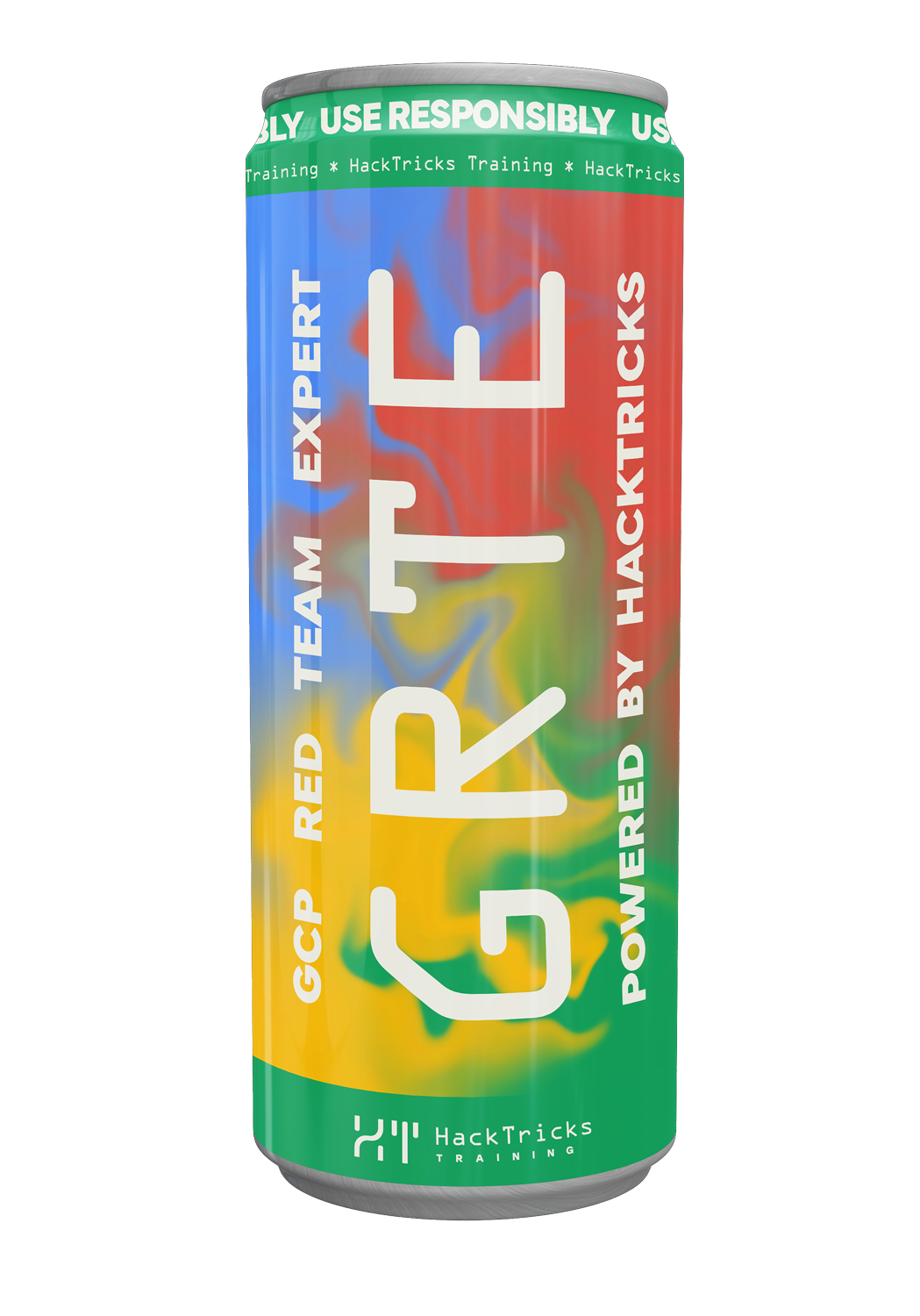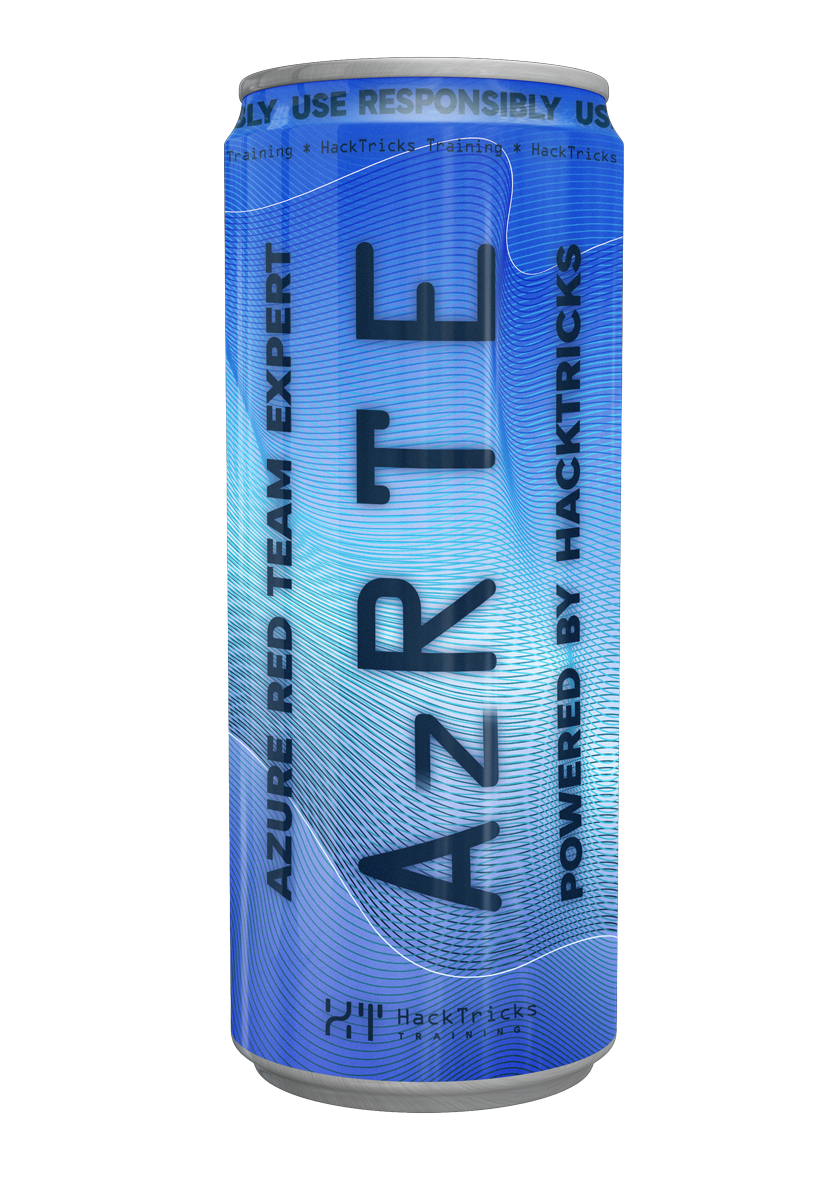Az - Інструменти для енумерації
Reading time: 17 minutes
tip
Вивчайте та практикуйте AWS Hacking: HackTricks Training AWS Red Team Expert (ARTE)
HackTricks Training AWS Red Team Expert (ARTE)
Вивчайте та практикуйте GCP Hacking:  HackTricks Training GCP Red Team Expert (GRTE)
HackTricks Training GCP Red Team Expert (GRTE) Вивчайте та практикуйте Azure Hacking:
Вивчайте та практикуйте Azure Hacking:  HackTricks Training Azure Red Team Expert (AzRTE)
HackTricks Training Azure Red Team Expert (AzRTE)
Підтримка HackTricks
- Перевірте плани підписки!
- Приєднуйтесь до 💬 групи Discord або групи Telegram або слідкуйте за нами в Twitter 🐦 @hacktricks_live.
- Діліться хакерськими трюками, надсилаючи PR до HackTricks та HackTricks Cloud репозиторіїв на GitHub.
Встановлення PowerShell в linux
tip
У linux потрібно встановити PowerShell Core:
sudo apt-get update
sudo apt-get install -y wget apt-transport-https software-properties-common
# Ubuntu 20.04
wget -q https://packages.microsoft.com/config/ubuntu/20.04/packages-microsoft-prod.deb
# Update repos
sudo apt-get update
sudo add-apt-repository universe
# Install & start powershell
sudo apt-get install -y powershell
pwsh
# Az cli
curl -sL https://aka.ms/InstallAzureCLIDeb | sudo bash
Встановлення PowerShell на MacOS
Інструкції з documentation:
- Встановіть
brew, якщо він ще не встановлений:
/bin/bash -c "$(curl -fsSL https://raw.githubusercontent.com/Homebrew/install/HEAD/install.sh)"
- Встановіть останній стабільний реліз PowerShell:
brew install powershell/tap/powershell
- Запустіть PowerShell:
pwsh
- Оновлення:
brew update
brew upgrade powershell
Основні інструменти енумерації
az cli
Azure Command-Line Interface (CLI) є кросплатформним інструментом, написаним на Python, для керування й адміністрування (більшості) ресурсів Azure та Entra ID. Він підключається до Azure і виконує адміністративні команди через командний рядок або скрипти.
Перейдіть за цим посиланням для installation instructions¡.
Команди в Azure CLI мають структуру за шаблоном: az <service> <action> <parameters>
Налагодження | MitM az cli
Використовуючи параметр --debug, можна побачити всі запити, які інструмент az відправляє:
az account management-group list --output table --debug
Щоб виконати MitM інструменту та вручну перевірити всі запити, які він надсилає, ви можете:
export ADAL_PYTHON_SSL_NO_VERIFY=1
export AZURE_CLI_DISABLE_CONNECTION_VERIFICATION=1
export HTTPS_PROXY="http://127.0.0.1:8080"
export HTTP_PROXY="http://127.0.0.1:8080"
# If this is not enough
# Download the certificate from Burp and convert it into .pem format
# And export the following env variable
openssl x509 -in ~/Downloads/cacert.der -inform DER -out ~/Downloads/cacert.pem -outform PEM
export REQUESTS_CA_BUNDLE=/Users/user/Downloads/cacert.pem
Az PowerShell
Azure PowerShell — модуль з cmdlets для керування ресурсами Azure безпосередньо з командного рядка PowerShell.
Follow this link for the installation instructions.
Commands in Azure PowerShell AZ Module are structured like: <Action>-Az<Service> <parameters>
Debug | MitM Az PowerShell
За допомогою параметра -Debug можна побачити всі запити, які відправляє інструмент:
Get-AzResourceGroup -Debug
In order to do a MitM to the tool and check all the requests it's sending manually you can set the env variables HTTPS_PROXY and HTTP_PROXY according to the docs.
Microsoft Graph PowerShell
Microsoft Graph PowerShell — кросплатформений SDK, який дозволяє отримувати доступ до всіх Microsoft Graph APIs, включно зі сервісами, такими як SharePoint, Exchange та Outlook, використовуючи єдину точку входу. Він підтримує PowerShell 7+, сучасну автентифікацію через MSAL, зовнішні ідентичності та розширені запити. Орієнтований на принцип найменших привілеїв, він забезпечує безпечну роботу та регулярно оновлюється, щоб відповідати останнім можливостям Microsoft Graph API.
Перейдіть за цим посиланням для installation instructions.
Команди в Microsoft Graph PowerShell мають структуру: <Action>-Mg<Service> <parameters>
Debug Microsoft Graph PowerShell
Використовуючи параметр -Debug, можна побачити всі запити, які інструмент надсилає:
Get-MgUser -Debug
AzureAD Powershell
Модуль Azure Active Directory (AD), тепер застарілий, є частиною Azure PowerShell для керування ресурсами Azure AD. Він надає cmdlets для завдань, таких як керування користувачами, групами та реєстраціями додатків в Entra ID.
tip
Це замінено Microsoft Graph PowerShell
Перейдіть за цим посиланням для інструкцій з встановлення.
Автоматизована розвідка та інструменти відповідності
turbot azure plugins
Turbot у поєднанні зі steampipe та powerpipe дозволяє збирати інформацію з Azure та Entra ID, виконувати перевірки відповідності та виявляти неправильні налаштування. Наразі найбільш рекомендовані до запуску модулі Azure:
- https://github.com/turbot/steampipe-mod-azure-compliance
- https://github.com/turbot/steampipe-mod-azure-insights
- https://github.com/turbot/steampipe-mod-azuread-insights
# Install
brew install turbot/tap/powerpipe
brew install turbot/tap/steampipe
steampipe plugin install azure
steampipe plugin install azuread
# Config creds via env vars or az cli default creds will be used
export AZURE_ENVIRONMENT="AZUREPUBLICCLOUD"
export AZURE_TENANT_ID="<tenant-id>"
export AZURE_SUBSCRIPTION_ID="<subscription-id>"
export AZURE_CLIENT_ID="<client-id>"
export AZURE_CLIENT_SECRET="<secret>"
# Run steampipe-mod-azure-insights
cd /tmp
mkdir dashboards
cd dashboards
powerpipe mod init
powerpipe mod install github.com/turbot/steampipe-mod-azure-insights
steampipe service start
powerpipe server
# Go to http://localhost:9033 in a browser
Prowler
Prowler — це інструмент безпеки з відкритим кодом для проведення оцінок відповідності найкращим практикам безпеки, аудитів, реагування на інциденти, постійного моніторингу, посилення безпеки та готовності до судово-експертних розслідувань в середовищах AWS, Azure, Google Cloud і Kubernetes.
Він дозволяє виконати сотні перевірок середовища Azure для виявлення конфігураційних помилок безпеки та зібрати результати у форматі json (та інших текстових форматах) або переглянути їх у веб-інтерфейсі.
# Create a application with Reader role and set the tenant ID, client ID and secret in prowler so it access the app
# Launch web with docker-compose
export DOCKER_DEFAULT_PLATFORM=linux/amd64
curl -LO https://raw.githubusercontent.com/prowler-cloud/prowler/refs/heads/master/docker-compose.yml
curl -LO https://raw.githubusercontent.com/prowler-cloud/prowler/refs/heads/master/.env
## If using an old docker-compose version, change the "env_file" params to: env_file: ".env"
docker compose up -d
# Access the web and configure the access to run a scan from it
# Prowler cli
python3 -m pip install prowler --break-system-packages
docker run --rm toniblyx/prowler:v4-latest azure --list-checks
docker run --rm toniblyx/prowler:v4-latest azure --list-services
docker run --rm toniblyx/prowler:v4-latest azure --list-compliance
docker run --rm -e "AZURE_CLIENT_ID=<client-id>" -e "AZURE_TENANT_ID=<tenant-id>" -e "AZURE_CLIENT_SECRET=<secret>" toniblyx/prowler:v4-latest azure --sp-env-auth
## It also support other authentication types, check: prowler azure --help
Monkey365
Дозволяє автоматично виконувати перевірки конфігурації безпеки підписок Azure та Microsoft Entra ID.
HTML-звіти зберігаються в каталозі ./monkey-reports всередині папки репозиторію github.
git clone https://github.com/silverhack/monkey365
Get-ChildItem -Recurse monkey365 | Unblock-File
cd monkey365
Import-Module ./monkey365
mkdir /tmp/monkey365-scan
cd /tmp/monkey365-scan
Get-Help Invoke-Monkey365
Get-Help Invoke-Monkey365 -Detailed
# Scan with user creds (browser will be run)
Invoke-Monkey365 -TenantId <tenant-id> -Instance Azure -Collect All -ExportTo HTML
# Scan with App creds
$SecureClientSecret = ConvertTo-SecureString "<secret>" -AsPlainText -Force
Invoke-Monkey365 -TenantId <tenant-id> -ClientId <client-id> -ClientSecret $SecureClientSecret -Instance Azure -Collect All -ExportTo HTML
ScoutSuite
Scout Suite збирає дані конфігурації для ручної перевірки та виділяє області ризику. Це багатохмарний інструмент аудиту безпеки, який дозволяє оцінювати стан безпеки хмарних середовищ.
virtualenv -p python3 venv
source venv/bin/activate
pip install scoutsuite
scout --help
# Use --cli flag to use az cli credentials
# Use --user-account to have scout prompt for user credentials
# Use --user-account-browser to launch a browser to login
# Use --service-principal to have scout prompt for app credentials
python scout.py azure --cli
Azure-MG-Sub-Governance-Reporting
Це powershell-скрипт, який допомагає вам візуалізувати всі ресурси та дозволи всередині Management Group і Entra ID tenant та виявляти помилки конфігурації безпеки.
Він працює з використанням Az PowerShell module, тому підтримуються будь-які методи автентифікації, які підтримує цей інструмент.
import-module Az
.\AzGovVizParallel.ps1 -ManagementGroupId <management-group-id> [-SubscriptionIdWhitelist <subscription-id>]
Автоматизовані Post-Exploitation інструменти
ROADRecon
Енумерація ROADRecon надає інформацію про конфігурацію Entra ID, таку як користувачі, групи, ролі, політики умовного доступу...
cd ROADTools
pipenv shell
# Login with user creds
roadrecon auth -u test@corp.onmicrosoft.com -p "Welcome2022!"
# Login with app creds
roadrecon auth --as-app --client "<client-id>" --password "<secret>" --tenant "<tenant-id>"
roadrecon gather
roadrecon gui
AzureHound
AzureHound — колектор BloodHound для Microsoft Entra ID та Azure. Це один статичний Go-бінарний файл для Windows/Linux/macOS, який безпосередньо взаємодіє з:
- Microsoft Graph (каталог Entra ID, M365) та
- Azure Resource Manager (ARM) control plane (subscriptions, resource groups, compute, storage, key vault, app services, AKS тощо)
Ключові характеристики
- Працює з будь-якої точки публічного інтернету проти tenant APIs (доступ до внутрішньої мережі не потрібен)
- Виводить JSON для імпорту в BloodHound CE, щоб візуалізувати шляхи атаки між ідентичностями та хмарними ресурсами
- Значення User-Agent за замовчуванням: azurehound/v2.x.x
Параметри автентифікації
- Username + password: -u
-p - Refresh token: --refresh-token
- JSON Web Token (access token): --jwt
- Service principal secret: -a
-s - Service principal certificate: -a
--cert <cert.pem> --key <key.pem> [--keypass ]
Приклади
# Full tenant collection to file using different auth flows
## User creds
azurehound list -u "<user>@<tenant>" -p "<pass>" -t "<tenant-id|domain>" -o ./output.json
## Use an access token (JWT) from az cli for Graph
JWT=$(az account get-access-token --resource https://graph.microsoft.com -o tsv --query accessToken)
azurehound list --jwt "$JWT" -t "<tenant-id>" -o ./output.json
## Use a refresh token (e.g., from device code flow)
azurehound list --refresh-token "<refresh_token>" -t "<tenant-id>" -o ./output.json
## Service principal secret
azurehound list -a "<client-id>" -s "<secret>" -t "<tenant-id>" -o ./output.json
## Service principal certificate
azurehound list -a "<client-id>" --cert "/path/cert.pem" --key "/path/key.pem" -t "<tenant-id>" -o ./output.json
# Targeted discovery
azurehound list users -t "<tenant-id>" -o users.json
azurehound list groups -t "<tenant-id>" -o groups.json
azurehound list roles -t "<tenant-id>" -o roles.json
azurehound list role-assignments -t "<tenant-id>" -o role-assignments.json
# Azure resources via ARM
azurehound list subscriptions -t "<tenant-id>" -o subs.json
azurehound list resource-groups -t "<tenant-id>" -o rgs.json
azurehound list virtual-machines -t "<tenant-id>" -o vms.json
azurehound list key-vaults -t "<tenant-id>" -o kv.json
azurehound list storage-accounts -t "<tenant-id>" -o sa.json
azurehound list storage-containers -t "<tenant-id>" -o containers.json
azurehound list web-apps -t "<tenant-id>" -o webapps.json
azurehound list function-apps -t "<tenant-id>" -o funcapps.json
What gets queried
- Graph endpoints (приклади):
- /v1.0/organization, /v1.0/users, /v1.0/groups, /v1.0/roleManagement/directory/roleDefinitions, directoryRoles, owners/members
- ARM endpoints (приклади):
- management.azure.com/subscriptions/.../providers/Microsoft.Storage/storageAccounts
- .../Microsoft.KeyVault/vaults, .../Microsoft.Compute/virtualMachines, .../Microsoft.Web/sites, .../Microsoft.ContainerService/managedClusters
Preflight behavior and endpoints
- Кожен azurehound list
- Identity platform: login.microsoftonline.com
- Graph: GET https://graph.microsoft.com/v1.0/organization
- ARM: GET https://management.azure.com/subscriptions?api-version=...
- Базові URL-адреси cloud environment відрізняються для Government/China/Germany. Див. constants/environments.go у репозиторії.
ARM-heavy objects (less visible in Activity/Resource logs)
- The following list targets predominantly use ARM control plane reads: automation-accounts, container-registries, function-apps, key-vaults, logic-apps, managed-clusters, management-groups, resource-groups, storage-accounts, storage-containers, virtual-machines, vm-scale-sets, web-apps.
- These GET/list operations are typically not written to Activity Logs; data-plane reads (e.g., *.blob.core.windows.net, *.vault.azure.net) are covered by Diagnostic Settings at the resource level.
OPSEC and logging notes
- Microsoft Graph Activity Logs are not enabled by default; enable and export to SIEM to gain visibility of Graph calls. Expect the Graph preflight GET /v1.0/organization with UA azurehound/v2.x.x.
- Entra ID non-interactive sign-in logs record the identity platform auth (login.microsoftonline.com) used by AzureHound.
- ARM control-plane read/list operations are not recorded in Activity Logs; many azurehound list operations against resources won’t appear there. Only data-plane logging (via Diagnostic Settings) will capture reads to service endpoints.
- Defender XDR GraphApiAuditEvents (preview) can expose Graph calls and token identifiers but may lack UserAgent and have limited retention.
Порада: При enumeration шляхів привілеїв, дампьте users, groups, roles та role assignments, потім імпортуйте в BloodHound і використовуйте готові cypher-запити для виявлення Global Administrator/Privileged Role Administrator та транзитивної ескалації через nested groups і RBAC assignments.
Запустіть веб BloodHound за допомогою curl -L https://ghst.ly/getbhce | docker compose -f - up та імпортуйте файл output.json. Потім, у вкладці EXPLORE, в секції CYPHER ви побачите іконку папки, яка містить готові запити.
MicroBurst
MicroBurst включає функції та скрипти, які підтримують discovery Azure Services, аудит слабких конфігурацій та post exploitation дії, такі як credential dumping. Він призначений для використання під час penetration tests, де використовується Azure.
Import-Module .\MicroBurst.psm1
Import-Module .\Get-AzureDomainInfo.ps1
Get-AzureDomainInfo -folder MicroBurst -Verbose
PowerZure
PowerZure був створений через потребу у фреймворку, який може як виконувати розвідку, так і експлуатацію Azure, EntraID та пов’язаних ресурсів.
Він використовує модуль Az PowerShell, тож будь-який спосіб аутентифікації, який підтримує цей модуль, підтримується інструментом.
# Login
Import-Module Az
Connect-AzAccount
# Clone and import PowerZure
git clone https://github.com/hausec/PowerZure
cd PowerZure
ipmo ./Powerzure.psd1
Invoke-Powerzure -h # Check all the options
# Info Gathering (read)
Get-AzureCurrentUser # Get current user
Get-AzureTarget # What can you access to
Get-AzureUser -All # Get all users
Get-AzureSQLDB -All # Get all SQL DBs
Get-AzureAppOwner # Owners of apps in Entra
Show-AzureStorageContent -All # List containers, shared and tables
Show-AzureKeyVaultContent -All # List all contents in key vaults
# Operational (write)
Set-AzureUserPassword -Password <password> -Username <username> # Change password
Set-AzureElevatedPrivileges # Get permissions from Global Administrator in EntraID to User Access Administrator in Azure RBAC.
New-AzureBackdoor -Username <username> -Password <password>
Invoke-AzureRunCommand -Command <command> -VMName <vmname>
[...]
GraphRunner
GraphRunner — це набір інструментів post-exploitation для взаємодії з Microsoft Graph API. Він надає різні інструменти для проведення reconnaissance, persistence та pillaging даних з облікового запису Microsoft Entra ID (Azure AD).
#A good place to start is to authenticate with the Get-GraphTokens module. This module will launch a device-code login, allowing you to authenticate the session from a browser session. Access and refresh tokens will be written to the global $tokens variable. To use them with other GraphRunner modules use the Tokens flag (Example. Invoke-DumpApps -Tokens $tokens)
Import-Module .\GraphRunner.ps1
Get-GraphTokens
#This module gathers information about the tenant including the primary contact info, directory sync settings, and user settings such as if users have the ability to create apps, create groups, or consent to apps.
Invoke-GraphRecon -Tokens $tokens -PermissionEnum
#A module to dump conditional access policies from a tenant.
Invoke-GraphRecon -Tokens $tokens -PermissionEnum
#A module to dump conditional access policies from a tenant.
Invoke-DumpCAPS -Tokens $tokens -ResolveGuids
#This module helps identify malicious app registrations. It will dump a list of Azure app registrations from the tenant including permission scopes and users that have consented to the apps. Additionally, it will list external apps that are not owned by the current tenant or by Microsoft's main app tenant. This is a good way to find third-party external apps that users may have consented to.
Invoke-DumpApps -Tokens $tokens
#Gather the full list of users from the directory.
Get-AzureADUsers -Tokens $tokens -OutFile users.txt
#Create a list of security groups along with their members.
Get-SecurityGroups -AccessToken $tokens.access_token
#Gets groups that may be able to be modified by the current user
Get-UpdatableGroups -Tokens $tokens
#Finds dynamic groups and displays membership rules
Get-DynamicGroups -Tokens $tokens
#Gets a list of SharePoint site URLs visible to the current user
Get-SharePointSiteURLs -Tokens $tokens
#This module attempts to locate mailboxes in a tenant that have allowed other users to read them. By providing a userlist the module will attempt to access the inbox of each user and display if it was successful. The access token needs to be scoped to Mail.Read.Shared or Mail.ReadWrite.Shared for this to work.
Invoke-GraphOpenInboxFinder -Tokens $tokens -Userlist users.txt
#This module attempts to gather a tenant ID associated with a domain.
Get-TenantID -Domain
#Runs Invoke-GraphRecon, Get-AzureADUsers, Get-SecurityGroups, Invoke-DumpCAPS, Invoke-DumpApps, and then uses the default_detectors.json file to search with Invoke-SearchMailbox, Invoke-SearchSharePointAndOneDrive, and Invoke-SearchTeams.
Invoke-GraphRunner -Tokens $tokens
Stormspotter
Stormspotter створює “attack graph” ресурсів в підписці Azure. Він дозволяє red teams та pentesters візуалізувати attack surface і pivot opportunities в межах tenant, а також значно посилює ваших defenders, щоб швидко зорієнтуватися та пріоритезувати роботу incident response.
На жаль, схоже, що він не підтримується.
# Start Backend
cd stormspotter\backend\
pipenv shell
python ssbackend.pyz
# Start Front-end
cd stormspotter\frontend\dist\spa\
quasar.cmd serve -p 9091 --history
# Run Stormcollector
cd stormspotter\stormcollector\
pipenv shell
az login -u test@corp.onmicrosoft.com -p Welcome2022!
python stormspotter\stormcollector\sscollector.pyz cli
# This will generate a .zip file to upload in the frontend (127.0.0.1:9091)
Посилання
- Виявлення в хмарі з AzureHound (Unit 42)
- Репозиторій AzureHound
- Репозиторій BloodHound
- Прапори AzureHound Community Edition
- AzureHound constants/environments.go
- AzureHound client/storage_accounts.go
- AzureHound client/roles.go
tip
Вивчайте та практикуйте AWS Hacking: HackTricks Training AWS Red Team Expert (ARTE)
HackTricks Training AWS Red Team Expert (ARTE)
Вивчайте та практикуйте GCP Hacking:  HackTricks Training GCP Red Team Expert (GRTE)
HackTricks Training GCP Red Team Expert (GRTE) Вивчайте та практикуйте Azure Hacking:
Вивчайте та практикуйте Azure Hacking:  HackTricks Training Azure Red Team Expert (AzRTE)
HackTricks Training Azure Red Team Expert (AzRTE)
Підтримка HackTricks
- Перевірте плани підписки!
- Приєднуйтесь до 💬 групи Discord або групи Telegram або слідкуйте за нами в Twitter 🐦 @hacktricks_live.
- Діліться хакерськими трюками, надсилаючи PR до HackTricks та HackTricks Cloud репозиторіїв на GitHub.
 HackTricks Cloud
HackTricks Cloud